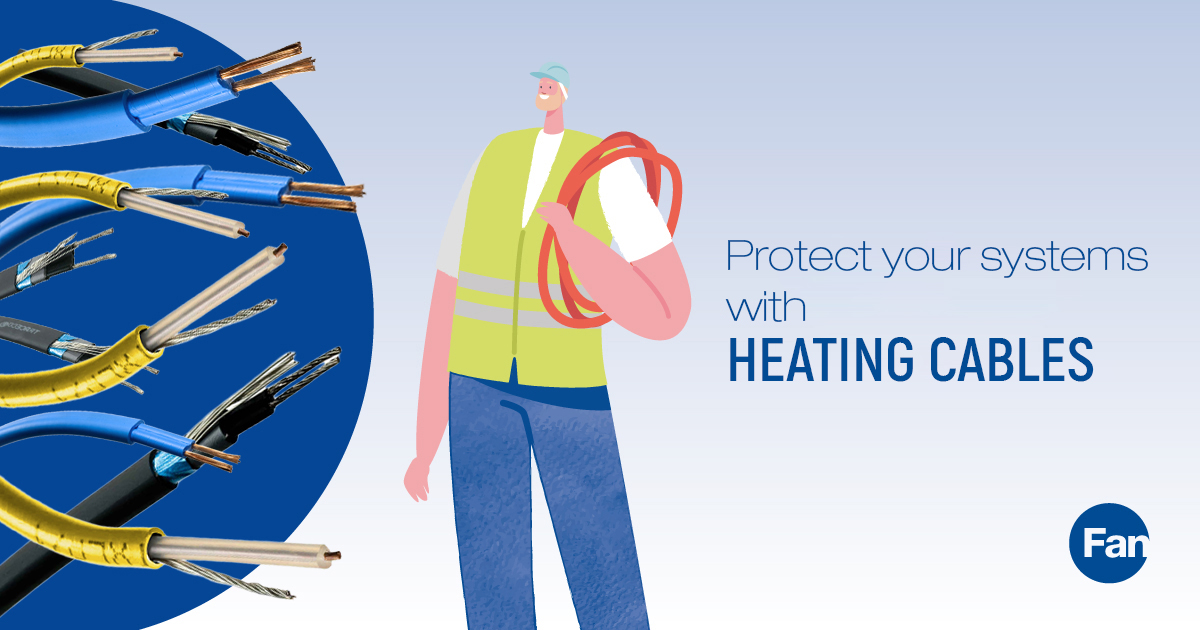With the arrival of winter, there is a growing concern that systems may suffer damage from frostbite, particularly when particularly cold temperatures are expected. Although the belief is quite widespread that the problem only marginally affects homes or in any case the spaces usually used, this is only partly true: even in homes, warehouses and offices it is possible that some parts of the systems or other types of pipes are still exposed to frost. Heating cables are an excellent response to this risk.
How heating cables work
As the name suggests, heating cables are electrical cables designed to emit enough heat to prevent the freezing of fluids inside pipes or water containers, constantly or according to atmospheric conditions.
According to their operation, they can be divided into two main families: constant power heating cables and self-regulating heating cables.
Constant power heating cables
This is the simplest solution, consisting of a conductive element with resistance function and equipped with appropriate insulation that, once activated through a switch or a thermostat, delivers constant power for the duration of the supply.
Self-regulating heating cables
A more advanced solution also from a constructive point of view. These make combined use of conductors and polymers capable of changing their resistance characteristics according to environmental conditions. As the temperature decreases, the power absorbed increases, thus increasing heat dissipation. In this way, you can have more precise control, but also better manage consumption, without the need for external equipment.
In addition, while constant power heating cables must be sized during construction and therefore cannot be adapted later during laying, self-regulating heating cables, precisely because of their characteristics, can be managed on site with cuts and joints, generally similar to common electrical cables.
Where heating cables are used
In general terms, the main use of heating cables is related to the preservation of a temperature above the freezing point. They are insulated and designed to be used in hydraulic contexts. Among the main installation possibilities are:
- piping
- gutters
- valves
- taps
- water meters
- water troughs
- vases and small tanks
In addition, they can also be used in the field of snow protection: by keeping the temperature just above thermal zero, they prevent the accumulation of snow cover and can be used for:
- roofs
- ramps
- slides
Using Fantini Cosmi’s heating cables, for example, the runway at Venegono Inferiore airport was secured, preventing it from freezing and accumulating snow cover in the winter months. In this case, the chosen solution was based on the 17W/m constant power heating cable type K17C102.
In addition, thanks to their characteristics, they can also be used to maintain a constant temperature even above zero. If appropriately sized, they allow conservation of the amount of heat, minimizing the necessary consumption.
Protect homes and investments with heating cables
Heating cables are an excellent tool to effectively and automatically prevent freezing damage in any type of pipeline or manifold and in any context where it is necessary to prevent freezing damage, thus avoiding the need for repair interventions, often emergency and complex.
For more information on Fantini Cosmi’s range of heating cables visit heating-cables page.




